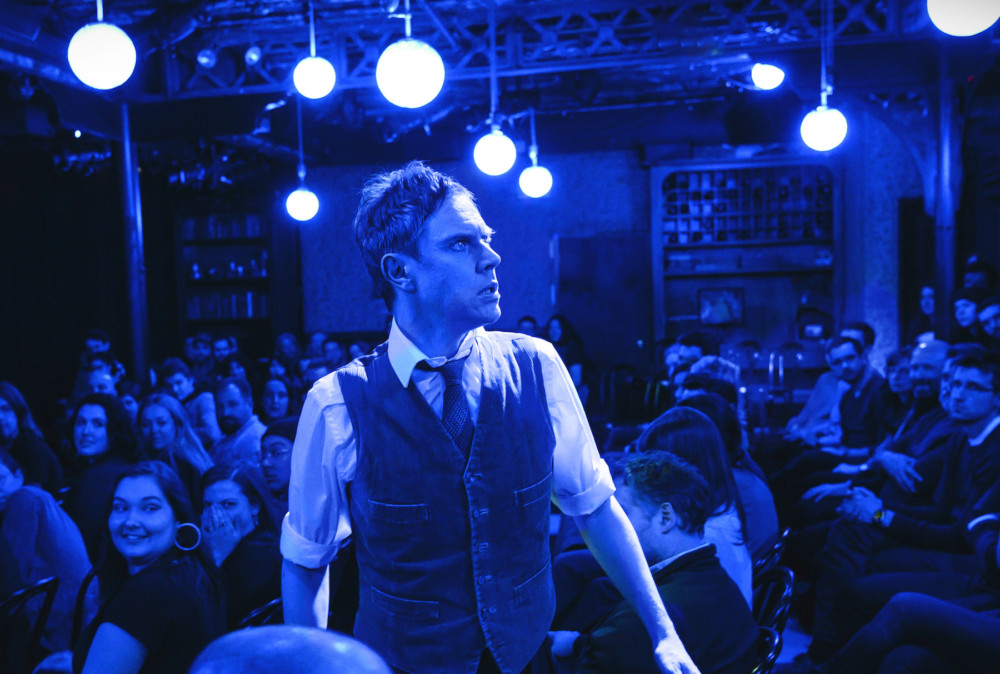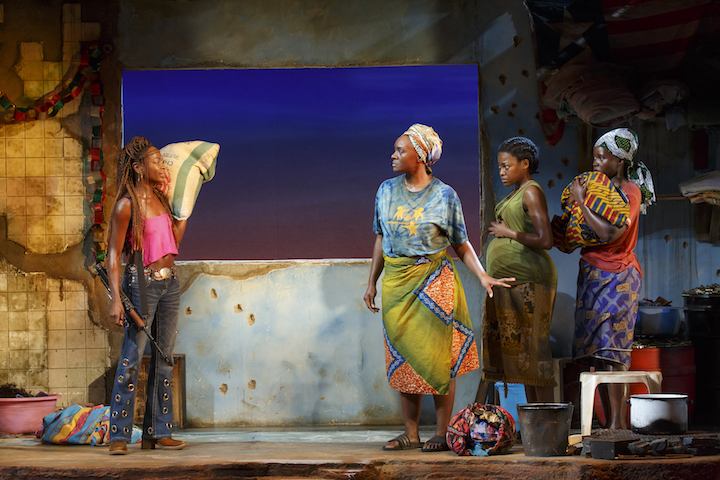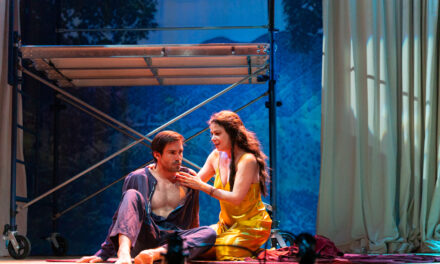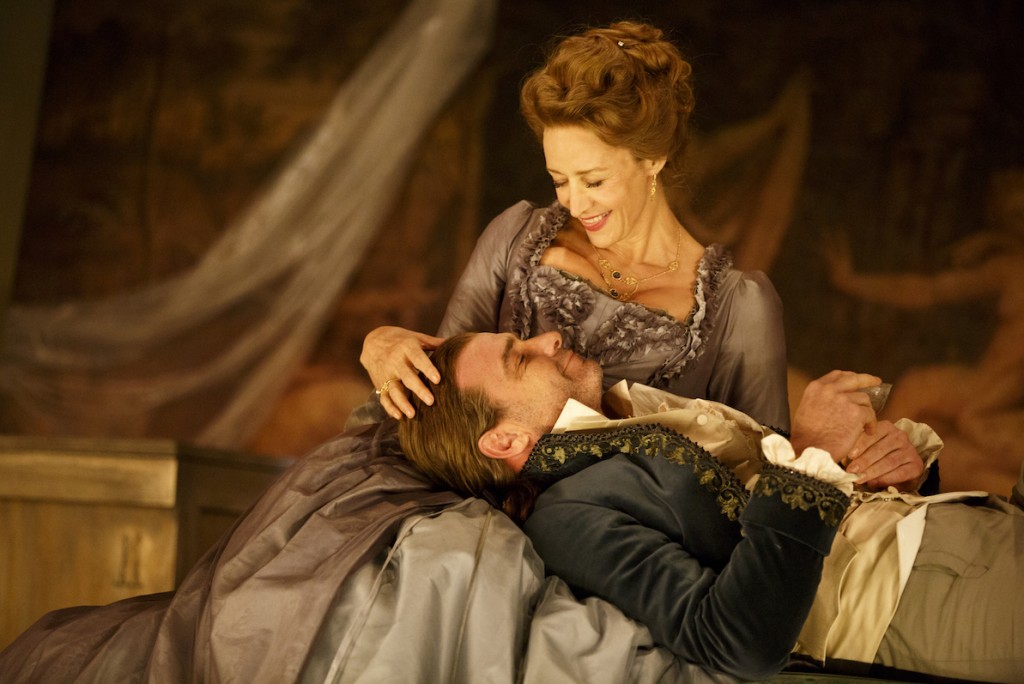

by JK Clarke
It’s remarkable how things can change in a short amount of time. Including the way we perceive the same character in a story. Case in point is the Vicomte de Valois in Les Liaisons Dangereuses. Though based on the 1782 novel by Pierre Choderlos de Laclos, the story is best known to most via the 1988 Stephen Frears film, Dangerous Liaisons starring John Malkovich (Valmont), Glenn Close (Merteuil) and Uma Thurman (Cécile). Though Malkovich and Close were considered villainous for the ways they tinkered with souls and emotions, Valmont’s treatment of Thurman’s Cécile would more likely have been labelled “seductive” in the 80s. Not so today. In fact, in the Broadway production starring Liev Schreiber, Janet McTeer and Elena Kampouris at the Booth theater, Valmont is more identifiable as a sexual predator who uses his physical and social strength to overpower and sexually abuse his victims. In this production, the gamesmanship and maliciousness of the Merteuil and Valmont nearly takes a back seat to the horrors of sexual assault. But, it is indeed more—it’s a story of deterioration: of morals, of souls and of society.
The play, beautifully written by Christopher Hampton (based on the original de Laclos novel), is the staging of a game between two on-again off-again aristocratic, sociopathic lovers: the progressively inebriate Vicomte de Valois (Scheiber, channeling a young Orson Welles) and La Marquise de Merteuil (McTeer whose command of her character’s duality is simply stunning). The machinations are somewhat intricate, but Valmont wants to seduce the elusive Madame de Tourvel (evenly and prettily played by Brigitte Hjort Sørensen), while Merteuil, seeking revenge, wants him to seduce and corrupt Cécile (Kampouris, who seems a little out of her depth), the young, recently-out-of-the-convent daughter of her ex-lover, a count who has recently rejected her. Though Valmont has at first little interest in the task, Merteuil dangles a sexual rendez-vous with herself if Valmont can prove he has “had” both Tourvel and Cécile. It’s a challenge he cannot resist. A virtuoso of deceit, his seduction (or overpowering and manipulation) of Cécile is immediate, though the same cannot be said of Tourvel (who has been warned of his awful behavior, ironically enough, by Cécile’s mother). Fittingly, the time he invests in trying to possess her leads him to falling in love.
Numerous subplots notwithstanding, the transgression (of Valmont’s having actual feelings for another woman) enrages Merteuil (who is as manipulative as Downton Abbey’s Dowager Countess with quips to match—“I’m not altogether certain how appropriate an emotion love is,” she proclaims) and she viciously double-crosses and ruins him.
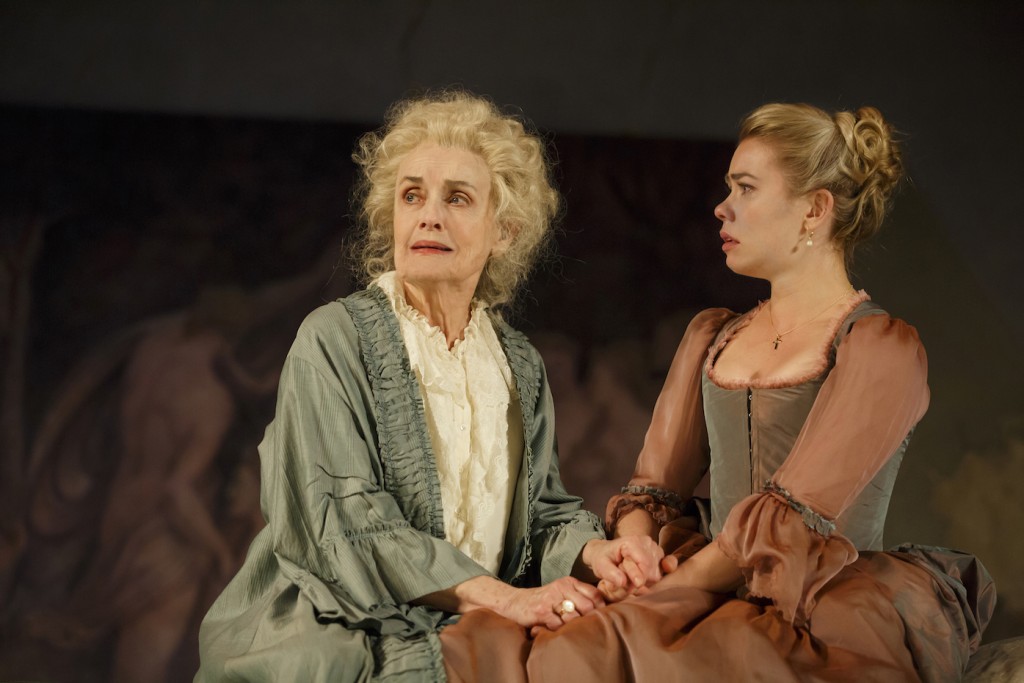

Unsurprisingly, the acrimonious pas de deux between Merteuil and Valmont (as well as the heartbreaking collateral damage) knocks the wind out of the audience. This is no “feel good” story, but rather a brilliant, exhausting, psychological drama filled with dynamic dialog (save for some over-obvious innuendo) and complex character interplay. While previous productions have played up the grandeur of pre-Revolutionary France with lush, elaborate sets, this time director Josie Rourke and set designer Tom Scutt (who also did the elaborate, period-perfect costumes) have chosen to represent the crumbling society with once grand drawing rooms that are contradicted by distressed walls with crumbling moulding that has the look of a construction zone. The deteriorating structure, however, is contrasted with elegant chandeliers (actual candles!) and extravagant furnishings, not to mention the perfectly costumed members of the household in full richesse. Mark Henderson’s warm muted hues of light and shadows (hearkening a Degas painting) add to the rooms’ denigrated beauty.
At the start of the second act, gilded frames which once had classic portraits are instead stacked and empty, mirroring the inner lives that had been ripped away by the monstrous combatants. While lacking the high style we ordinarily associate with the period, the set reflects the societal erosion that the arrogance of these latter day one-percenters would bring upon themselves a mere eight or nine years later (the play is set in the early 1780s), when the partisans of the French Revolution would demolish the ancien régime and wreak bloody havoc on this very tribe of entitled aristocrats.
Les Liaisons Dangereuses is an emotionally tough play to endure. Though there is ultimately tragic love, the real takeaway is the wretchedness of these two souls—and that’s hard for some audiences to deal with. On the night I attended, several people left during intermission; but, a large number of those who stayed gave it a standing ovation, which perfectly fits the paradox we are presented with: the arc of the beauty and putridness of mankind unveiled in a complex drama of a mere two and a half hours.
Les Liaisons Dangereuses. Through January 22, 2017 at the Booth Theatre (222 West 45th Street, between Seventh and Eighth Avenues). www.liaisonsbroadway.com
Photos: Joan Marcus





